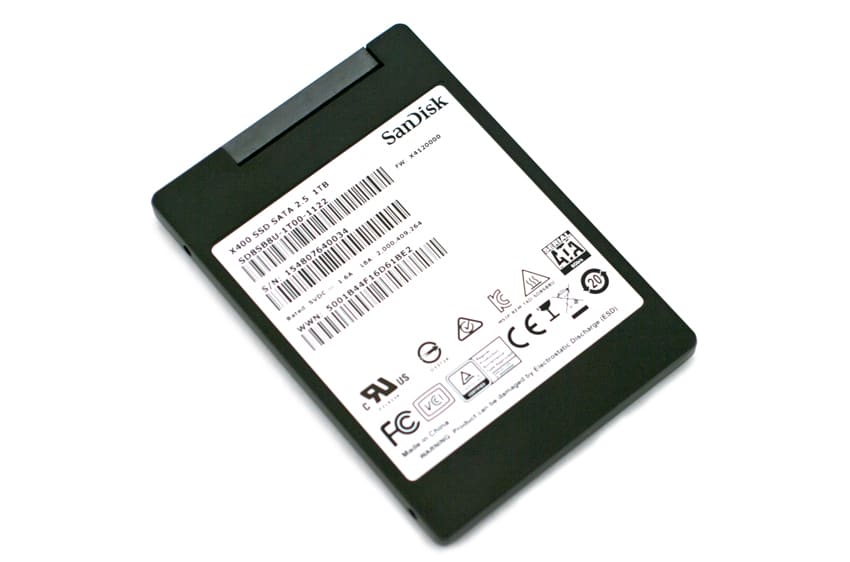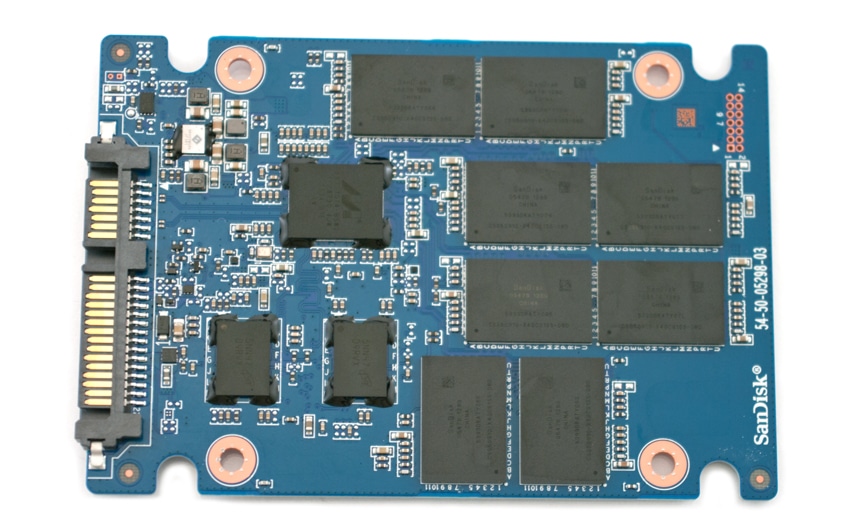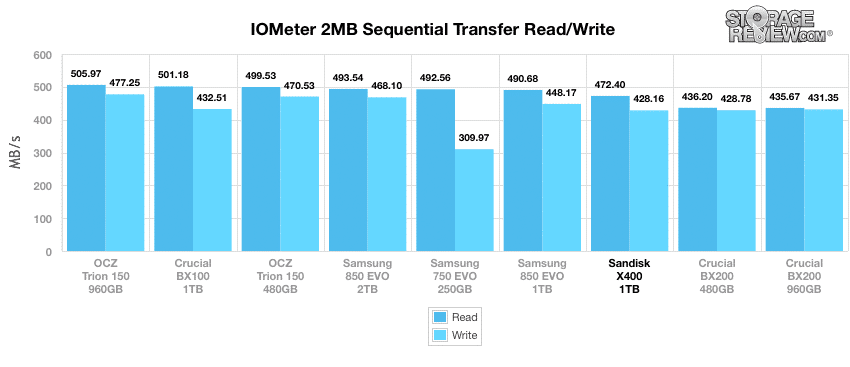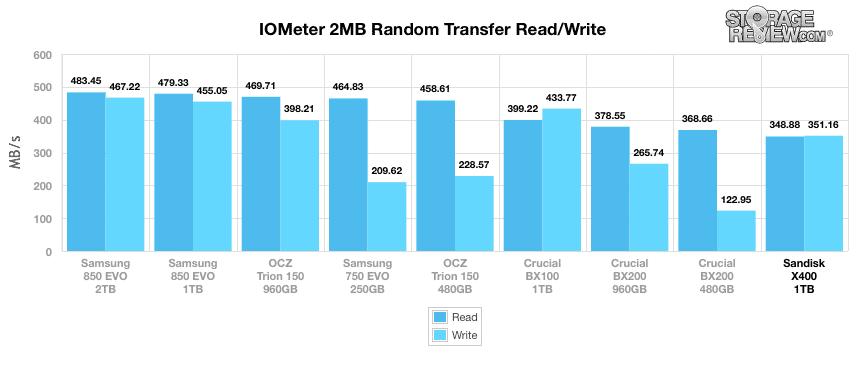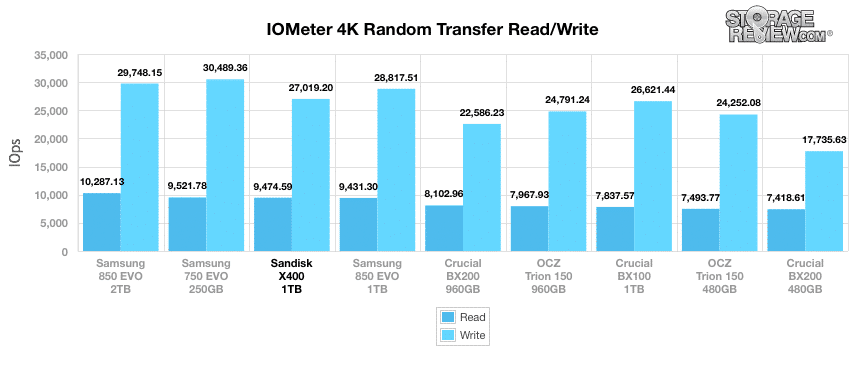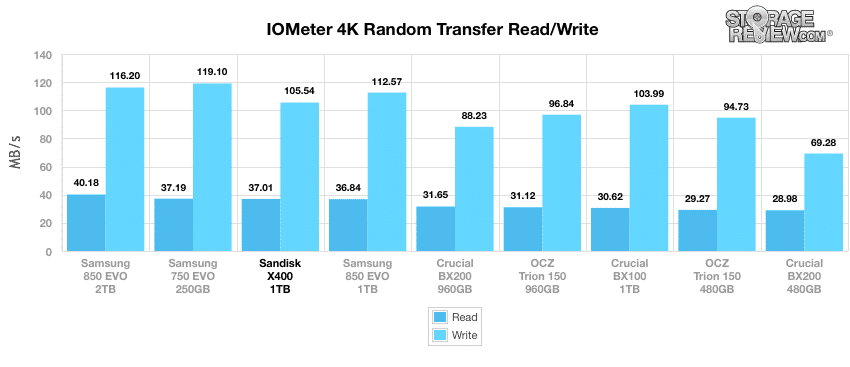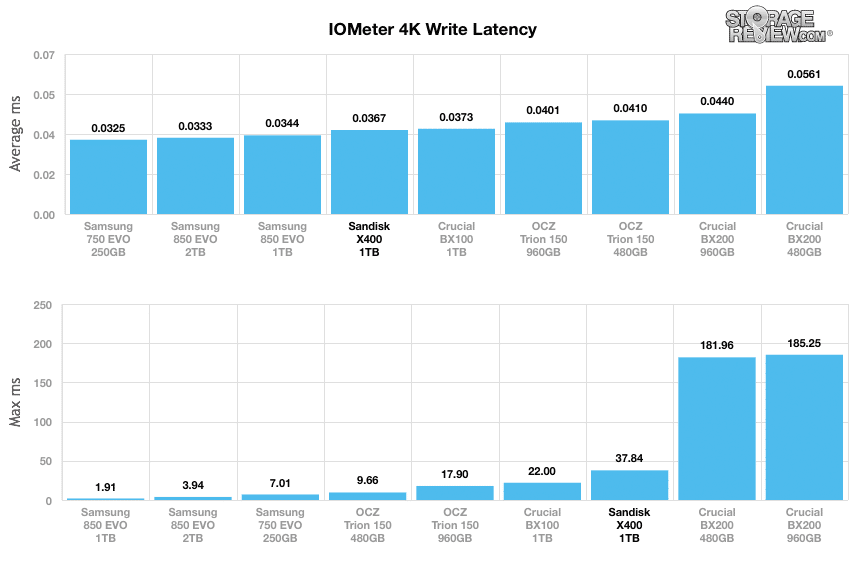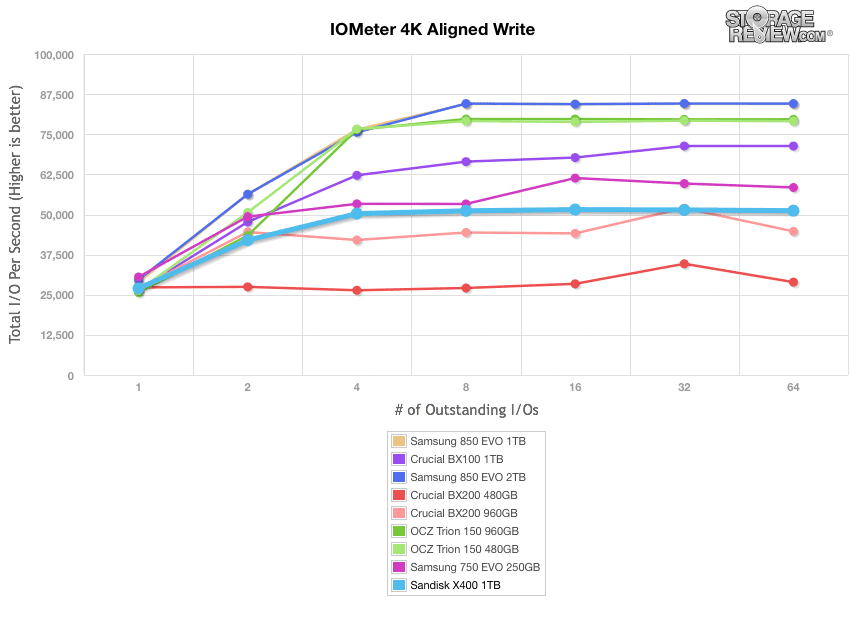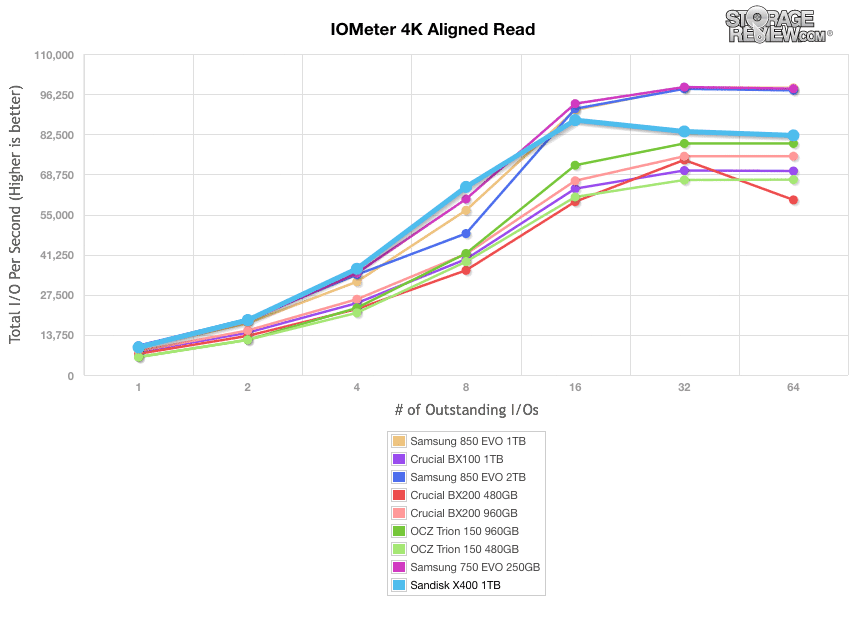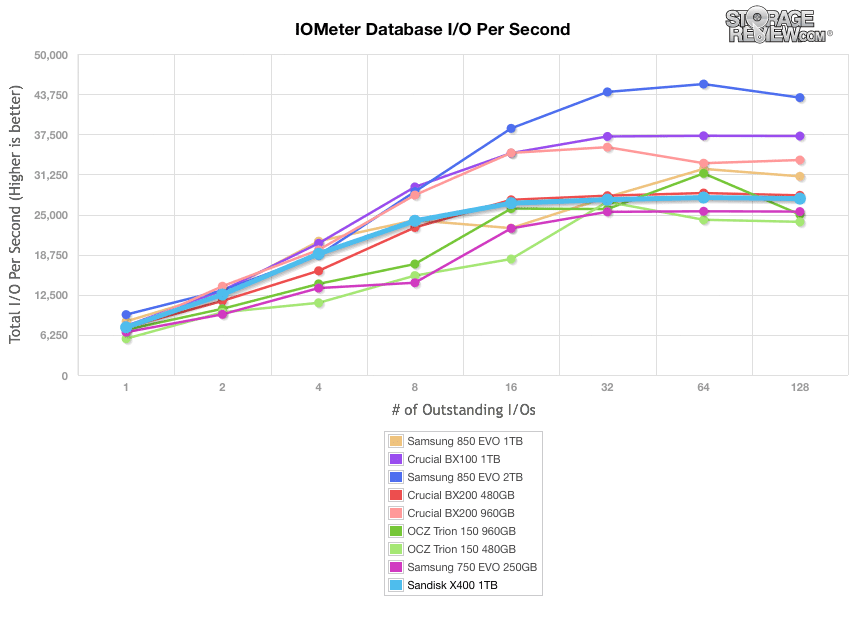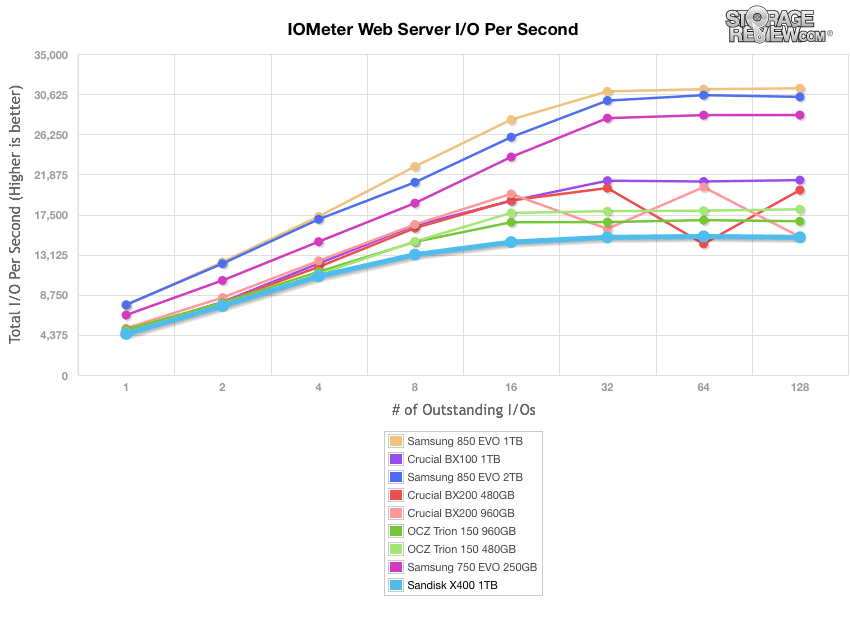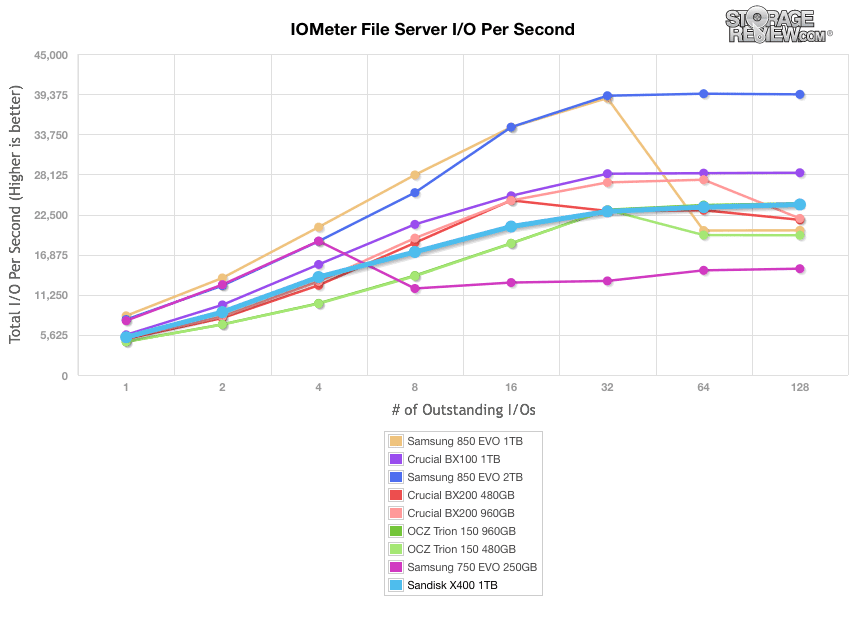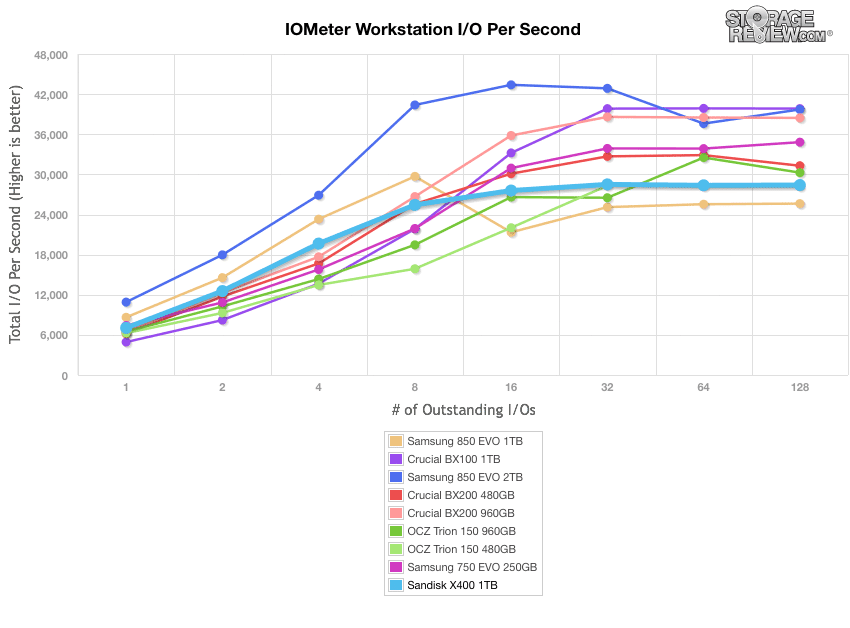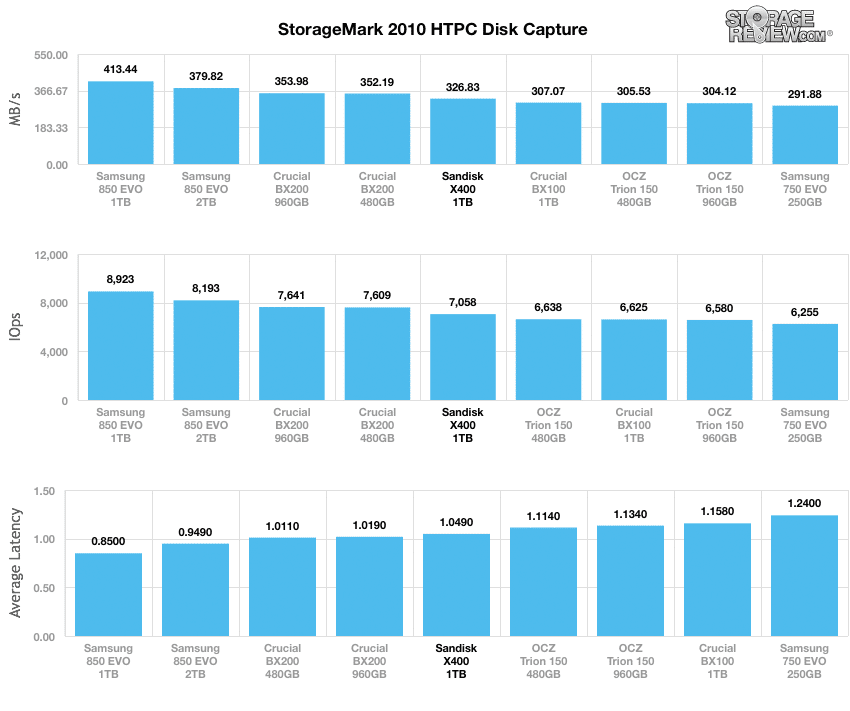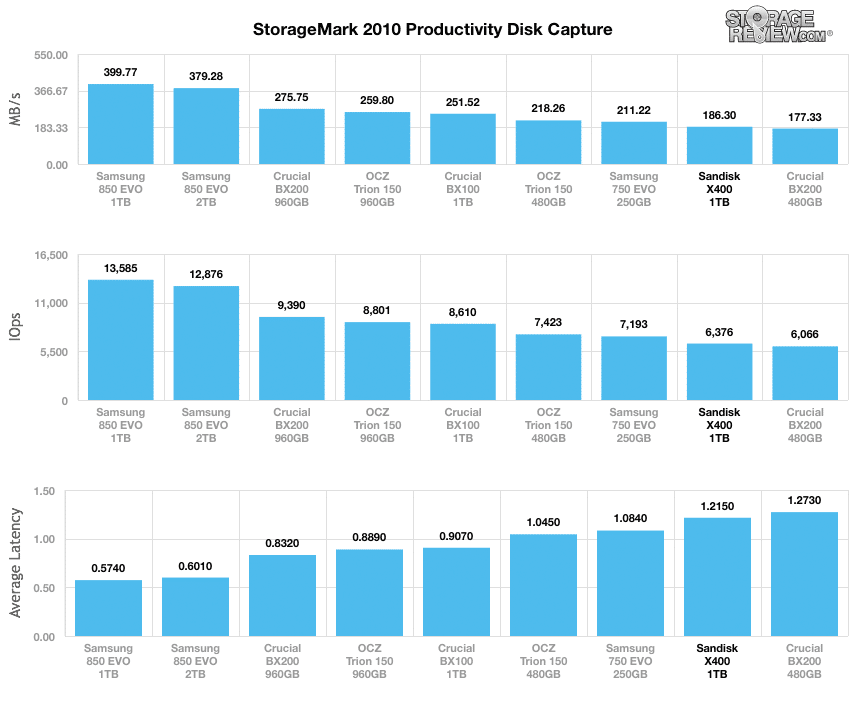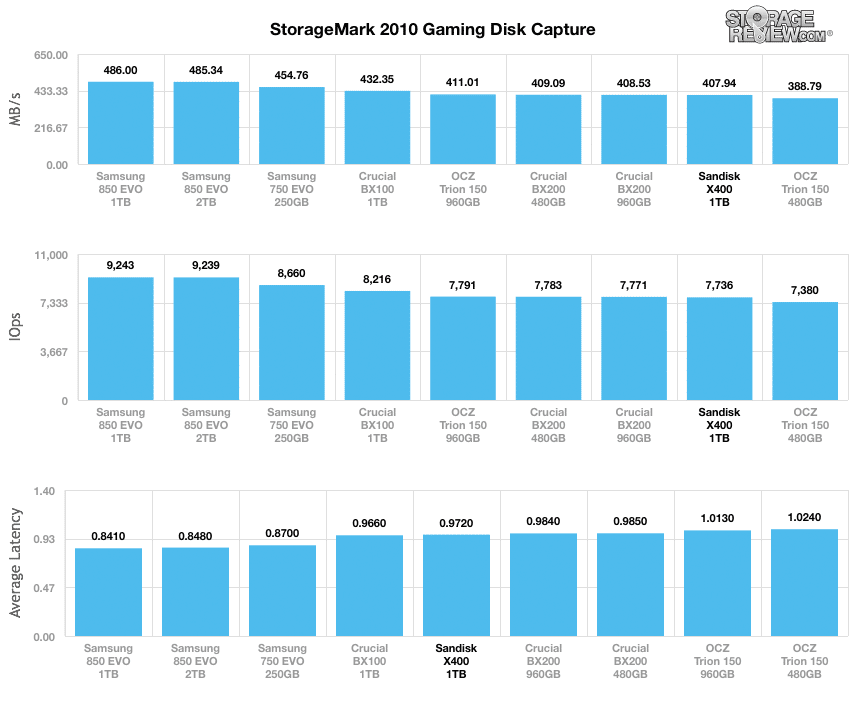
The X400 SSD release establishes SanDisk as one of the only companies currently offering 1TB of storage in a single-sided M.2 card. Although the X400 also comes in a 2.5″ 7mm-height form factor (which is the focus of our review), the M.2 configuration is the main selling point of this line of SSDs. Installing a 1TB M.2 X400 card will allow users to get the most out of their ultra-thin notebooks in terms of storage, without sacrificing performance or battery life. The X400 makes use of SanDisk’s nCache 2.0 technology, which leverages multi-tiered architecture and provides improved performance during taxing operations like sustained-sequential writing. SanDisk’s 2nd generation TLC flash node works to maximize reliability and energy efficiency so that the X400 uses minimal power, making it ideal for use in a mobile setting.
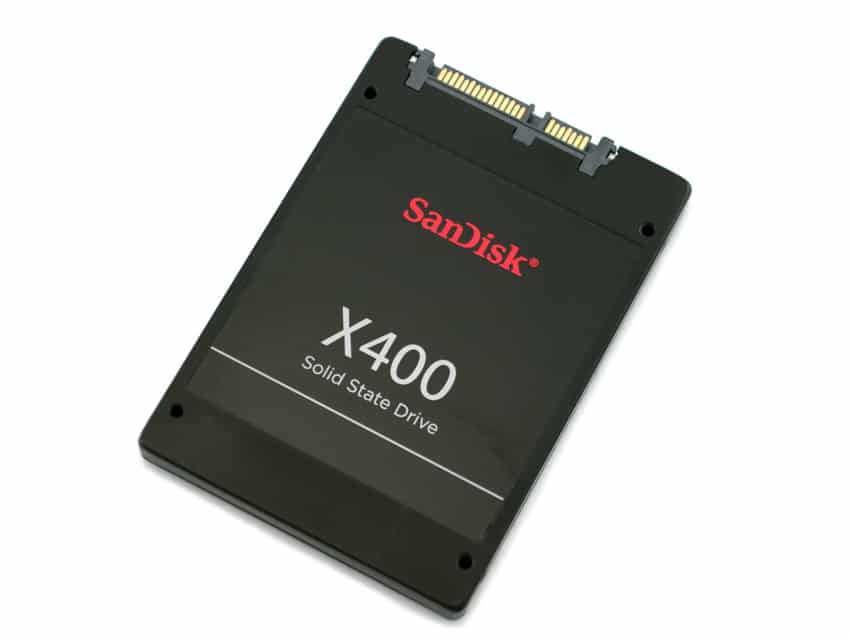
In terms of security, the X400 comes with TCG Opal 2.0 support, which allows the X400 to be compatible with 3rd-party security ISVs (Independent Software Vendors) if enhanced security is desired. The X400 also has SED (Self-Encrypted Drive) capabilities, giving users access to hardware-based 256-bit AES encryption. Additional features like DataGuard Client and LDPC error correction improve drive endurance, pushing its lifespan up to a reported 320TBW (TB written). SanDisk built the X400 with a specialized hardware core that performs error corrections on the fly, sparing users from experiencing an appreciable drop in latency in the event of a minor writing error.
The SanDisk X400 SSD comes in capacities of 128GB, 256GB, 512GB, and 1TB. Pricing for the 2.5″ form factor is around $50.49, $78.99, $122.50, and $249.99, respectively. There is a slight bump in price for the M.2 models, which cost $59.99, $94.99, $142.99, and $259.99, respectively. Each model comes with a 5-year warranty.
Specifications
- Available Capacities/Reported Performance
- 128GB
- Sequential Read/Write: Up to 540/340MB/s
- Random Read/Write: Up to 93.5/60k IOPS
- 256GB
- Sequential Read/Write: Up to 540/5200MB/s
- Random Read/Write: Up to 93.5/75k IOPS
- 512GB
- Sequential Read/Write: Up to 540/5200MB/s
- Random Read/Write: Up to 93.5/75k IOPS
- 1TB
- Sequential Read/Write: Up to 545/520MB/s
- Random Read/Write: Up to 95k IOPS
- 128GB
- Form Factor: 2.5″ 7mm cased, M.2 2280
- Dimensions
- 2.5″ 7mm cased: 7mm x 69.85mm x 100.5mm
- M.2 2280: 1.5mm (max) x 22mm x 80mm
- Interface: SATA 6Gb/s
- Endurance
- 128GB: 72 TBW
- 256GB: 80TBW
- 512GB: 160TBW
- 1TB: 320TBW
- Weight
- 2.5″ 7mm: 51±3g (128GB), 55±3g (256GB and 512GB), 58±3g (1TB)
- M.2 2280: 7±1g
- Operating Temperature: 0ºC to 70ºC (32ºF to 158ºF)
- Storage Temperature: -55ºC to 85ºC (-67ºF to 185ºF)
- Supply Voltage
- 2.5″ 7mm: 5V±5%
- M.2 2280: 3.3V±5%
- Slumber: 45mW-52mW
- DEVSLP: 4.85-8.50mW
- Average Active Power: 70mW
- Operating Vibrations: 5 gRMS, 10-2000Hz, 3 axes
- Non-Operating Vibrations: 4.9gRMS, 7-800Hz, 3 axes
- Operating/Non-Operating Shock: 1,500 @0.5ms half sine
- Certifications: FCC, UL, TUV, KC, BSMI, VCCI
- Warranty: 5 years
Design and Build
The X400 features a simple design, with black casing and red branding. The face has some product information written in white text below the SATA connectors. The back of the X400 just has a white sticker with product information (e.g., serial number). With its casing, the X400 can serve as a drop-in replacement for 2.5″ drives.
Removing the card from its casing, the circuit board consists of SanDisk’s TLC flash nodes and controller.
The back of the card is completely blank since the X400 uses a single-sided design for both the 2.5″ and its M.2 form factors
Consumer Synthetic Benchmarks
All consumer SSD benchmarks are conducted with the StorageReview HP Z620 Workstation. We compared the SanDisk X400 SSD with the following drives:
- Samsung 850 EVO 2TB (SATA, 6Gb/s, Samsung MHX controller)
- Samsung 850 EVO 1TB (SATA, 6Gb/s, Samsung MEX controller)
- Samsung 750 EVO 250GB (SATA, 6Gb/s)
- Crucial BX100 1TB (SATA, 6Gb/s, Silicon Motion SM2246EN controller)
- Crucial BX200 480TB (SATA, 6Gb/s, Silicon Motion SM2256 controller)
- Crucial BX200 960TB (SATA, 6Gb/s, Silicon Motion SM2256 controller)
- OCZ Trion 150 960GB (SATA, 6GB/s, Toshiba controller)
- OCZ Trion 150 480GB (SATA, 6GB/s, Toshiba controller)
All IOMeter figures are represented as binary figures for MB/s speeds.
In our first test, which measures 2MB sequential performance, the SanDisk X400 held up both in terms of read and write (472MB/s and 428MB/s, respectively), although it was not the top drive in either category. Most drives exhibited a similar performance in this benchmark.
In 2MB random transfers, the SanDisk X400 slowed down somewhat, especially in read transfers (348MB/s). Although the SanDisk X400’s write performance (351MB/s) outpaced roughly half of the other drives, it was much slower than the drives that lead this benchmark (like the Samsung EVO 2TB, which posted 467MB/s).
Our random 4K benchmark with IOMeter puts more strain on the drives in terms of throughput. In this test, the SanDisk X400 performed well overall, with the third-highest read performance (9,474 IOPS or 37MB/s) and the fourth-highest write performance (9,475 IOPS or 106MB/s). The Samsung 850 EVO 2TB and 750 EVO 250GB drives were the overall top performers.
Results were similar in terms of MB/s: the X400 trailed just behind the Samsung drives (with 105.54MB/s write and 37.01MB/s read), but outperformed the rest of the pack.
The SanDisk X400 also performed well in average write latency, trailing the Samsung EVO SSDs but outpacing all of the other drives (0.0367ms). The X400 fell behind slightly in terms of max write latency, with 37.8ms. For comparison, the Samsung 850 EVO 1TB posted a max write latency of 1.91ms. The Crucial BX200 drives were the slowest, with latencies of over 180ms.
In our next 4K test, we move to a workload with 100% write activity, which scales from 1QD to 64QD. In the aligned write setting, the SanDisk X400 performed slightly below average compared to the other drives, outperforming only the Crucial BX200 drives. The Samsung 850 EVO 2TB was the top performer.
The SanDisk X400 improved in our aligned read benchmark, finishing out the test as the third-fastest drive behind the Samsung 750 EVO 250GB and 850 EVO 2TB.
Our final consumer synthetic benchmarks compare the drives in a series of mixed server workloads with a queue depth from 1 to 128. Each server profile has a strong bias towards read activity, ranging from 67% read with the database profile to 100% read in the web server profile.
The database profile features a 67% read and 33% write workload focusing on transfers around 8K in size. The SanDisk X400’s performance wasn’t great with this workload. It exhibited a performance similar to the Crucial BX200 480GB, and outperformed the OCZ Trion 150 drives by the end of the test. The Samsung 850 EVO outperformed the SanDisk X400 by almost 20,000 IOPS.
Our next benchmark is the web server profile, which is read-only, with transfer sizes ranging from 512-bytes to 512KB. The SanDisk X400 was the slowest drive tested in terms of web serving, although the Crucial BX200 drives had similar numbers at various stages of the test.
The file server profile has 80% read and 20% write workload spread out over multiple transfer sizes ranging from 512-bytes to 64KB. Although the SanDisk X400 performed below average for most of the test, by the end it was the third-fastest drive behind the Samsung 850 EVO 2TB and Crucial BX100 1TB.
The last profile looks at workstation activity, with a 20% write and 80% read mixture using 8K transfers. The SanDisk X400 exhibited numbers that are consistent with its performance in most of the other benchmarks. Overall it was in the average range, but in the beginning of the test, it was one of the faster drives.
Consumer Real-World Benchmarks
While the results of synthetic benchmarks are important to identify the key strengths and weaknesses of a drive, performance in these tests does not always translate directly into real-world situations. To get a better idea how the SanDisk X400 will handle itself in the field, we will chart StorageMark 2010 HTPC, Productivity, and Gaming traces against comparable drives. Higher IOPS and MB/s rates with lower latency times are preferred.
The first trace is based on use as a Home Theater PC (HTPC). The test includes playing one 720P HD movie in Media Player Classic, one 480P SD movie playing in VLC, three movies downloading simultaneously through iTunes, and one 1080i HDTV stream being recorded through Windows Media Center over a 15-minute period.
The SanDisk X400 handled our HTPC profile relatively well, posting 327MB/s (7,060 IOPS, 1.05ms) and ranking in the middle of the pack. The Samsung 850 EVO drives and Crucial BX200 480GB outpaced the SanDisk X400, which was faster than the Crucial BX100 1TB, OCZ Trion 150 drives, and Samsung 750 EVO 250GB.
The next trace simulates disk activity in an office workstation or productivity scenario. This test includes three hours of operation in an office productivity environment with 32-bit Windows Vista running Outlook 2007 connected to an Exchange server, web browsing using Chrome and IE8, editing files within Office 2007, viewing PDFs in Adobe Reader, an hour of local music playback, and two hours of streaming music via Pandora.
The SanDisk X400 fell behind in our productivity trace, with only 186MB/s (6,380 IOPS, 1.22ms), outperforming only the Crucial BX200 480GB.
The final consumer real-life benchmark simulates disk activity during gaming. This simulation taxes the drive’s read performance, with 6% write operations and 94% read operations. The test consists of a Windows 7 Ultimate 64-bit system pre-configured with Steam, with Grand Theft Auto 4, Left 4 Dead 2, and Mass Effect 2 already downloaded and installed. The trace captures the heavy read activity of each game loading from the start, as well as textures as the game progresses.
The SanDisk X400 exhibited a relatively poor performance in our gaming profile (408MB/s and 7,740 IOPS), posting lower numbers than all but the OCZ Trion 150. In terms of average latency, it was roughly average (0.97ms).
Conclusion
SanDisk’s new ultra-thin SSD has become their top-of-the-line offering, especially for thin and light notebooks. The X400 is available in either a single-sided M.2 form factor (1.55mm), or a standard 2.5″ 7mm-height form factor, both of which provide up to 1TB of storage. SanDisk built the X400 with their 2nd generation TLC flash node, which was designed to be fast and reliable, while minimizing power consumption (i.e., maximizing battery life). Another notable feature of this SSD is its use of SanDisk’s nCache 2.0 technology, which comes into play during performance bursts and high sustained sequential writing, making the X400 well-equipped to keep up with mainstream use cases.
In addition to basic SSD features like DataGuard Client and LDPC error correction, the X400 comes with a dedicated hardware core that automatically corrects writing errors without draining much power. The X400 includes standard hardware-based 256-bit AES encryption capabilities as well as TCG Opal 2.0, which gives it 3rd party software compatibility.
The X400 performed quite well in our synthetic and real-world benchmarks. It tended to be roughly average in most of our tests, although it excelled with 4K random transfers and aligned reads. The drive had a throughput of 27,019 IOPS write and 9,474 IOPS read in random transfers and came in third overall in our aligned read. There was a slight performance drop in our StorageMark 2010 benchmarks, especially the productivity and gaming trace. Although it was outpaced by some of the performance SSDs (e.g., Samsung EVO 850), the X400 held its own against the other drives in our HTPC benchmark.
In the end, the X400 is designed to give OEMs and system integrators an option that delivers all the benefits of flash while still providing system design flexibility, thanks especially to the thin M.2 form factor. The TLC NAND architecture allows SanDisk to competitively price the X400, further enhancing the value proposition for those looking for an HDD alternative or replacement.
Pros
- One of the only 1TB drives that offers an M.2 form factor
- Energy-efficient
- 320TBW endurance
Cons
- Weaker mixed workload performance
The Bottom Line
The SanDisk X400 offers a nice performance-to-price ratio for a 1TB drive and comes in an ultra-thin 1TB M.2 form factor, broadening its flexibility in deployment without sacrificing key security and data integrity features.
Sign up for the StorageReview newsletter

